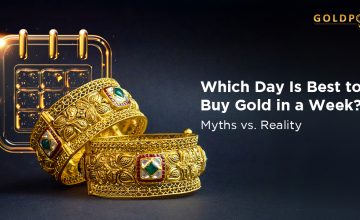
- May, 22 2025
- | Gold Investment, Gold Rate, Sell Gold
How Central Banks and Gold ETFs Are Shaping the Future of Gold
Financial markets are evolving faster than ever, and gold is evolving with them. With central banks increasing their gold reserves and innovative investment options like gold ETFs gaining popularity, gold’s role is expanding beyond jewellery and coins. It has become a vital asset shaping the future of gold investment worldwide.
The Growing Role of Central Bank Gold Reserves
Across the globe, central banks are revisiting their reserve strategies, and gold is now a key focus. Traditionally, central bank gold reserves acted as a safeguard during economic uncertainty. In recent years, with global geopolitical tensions and volatile markets, central banks, including the Reserve Bank of India (RBI), have accelerated gold purchases to strengthen their financial security.
India’s gold reserves have steadily increased, reflecting the nation’s historic trust in gold as a safe asset. Gold held by central banks acts as a universal store of value, independent of currency fluctuations, providing a hedge against inflation and economic instability.
For investors, this growth in central bank gold reserves signals that gold remains a reliable asset with enduring value, backed by powerful institutional confidence, not just individual demand.
Revisiting the Concept of Gold-Backed Currency
The idea of a gold-backed currency is gaining renewed attention. Historically, India and many other nations operated on the gold standard, linking currency value directly to gold. Although this system was phased out decades ago, today, concerns about rising inflation and national debt have brought the concept back into economic discussions worldwide.
A gold-backed currency means the government’s money is tied to actual gold reserves, limiting excessive currency printing and helping stabilise the economy. For India, which holds significant gold reserves and where gold plays a central role culturally and economically, this concept offers an interesting possibility to restore faith in currency stability and long-term value.
Though widespread adoption remains uncertain, the renewed interest underlines gold’s critical role, not just as an investment but as a pillar of national economic strategy.
Gold ETFs: Democratising the Future of Gold Investment
One of the most exciting developments in gold investment is the rise of Gold Exchange Traded Funds (ETFs). These funds allow investors to buy shares representing physical gold stored securely, removing the challenges of handling or storing gold personally.
In India, gold ETFs have rapidly gained popularity as they offer transparency, affordability, and ease of trading. Unlike traditional jewellery, ETFs provide liquidity and lower costs while maintaining the benefits of owning gold. This shift is reshaping the future of gold investment by blending the reliability of physical gold with modern financial tools.
This trend also aligns with the growing number of Indian investors who seek to diversify their portfolios with safer, more flexible assets like gold ETFs.
What This Means for Indian Investors
India has a deep cultural affinity for gold, often viewed as a symbol of wealth, security, and prosperity. Yet, when it comes to investing or selling gold, transparency and trust become paramount.
At Muthoot Gold Point, we combine tradition with technology. Using advanced XRF testing for purity and ultrasonic cleaning, we ensure every customer gets the highest market value for their gold. Our instant payment options and transparent weighing processes build confidence in every transaction.
Understanding how central bank gold reserves, gold-backed currency ideas, and ETFs influence gold’s market value can empower you to make smarter investment or selling decisions in today’s changing landscape.
Looking Ahead
The future of gold investment is a dynamic blend of heritage and innovation. Central banks like the RBI affirm gold’s enduring importance by steadily increasing reserves, while gold ETFs show how the metal is adapting to meet the demands of modern economies. As this landscape evolves, Muthoot Gold Point remains a trusted partner for Indian customers looking to sell their gold with complete transparency and confidence.









